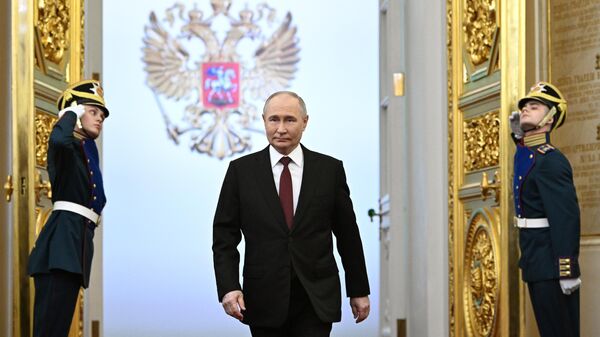US-China Relations: Navigating a Complex Era of Diplomacy amid Rising Tensions
As US Secretary of State Antony Blinken engages with Chinese leadership, the world watches the delicate interplay of diplomacy, trade, and security that defines the current US-China relations.
Published April 27, 2024 - 00:04am

Image recovered from bostonglobe.com
High-level talks between the United States and China have recently taken center stage, as US Secretary of State Antony Blinken and Chinese leaders, including President Xi Jinping, grapple with a myriad of challenging bilateral, regional, and global issues, The Boston Globe and The Star reported. From accusations of stifling China's technological progress to concerns over China's economic assistance to Russia amid the Ukraine conflict, the discourse showcases a blend of cautious diplomacy and stark admonitions.
While both nations acknowledge progress on practical fronts such as artificial intelligence dialogues, military communications, and cultural exchanges, the strategic divide remains pronounced. As geographical disputes and trade frictions simmer, Blinken has been vocal about the repercussions of China's support for Russia, emphasizing the broad security threats it poses, not only to Ukraine but also to Europe, reported by Dnevnik.hr and Boston Globe.
The Biden administration's concern over Chinese exports echoes through its economic policies, casting a shadow of potential sanctions and a looming ban on TikTok, a Chinese-owned social media platform. Contrasting this stance, Wang Yi's meeting with Blinken in Beijing reflects China's plea for the US to respect its core interests and refrain from suppressing its development, as described by Stheadline.com and Novosti.rs.
In the interplay of diplomacy, there are signs of stabilization, with China expressing desires to see a thriving United States and urging a harmonious path forward. Nonetheless, the candid discussions between Blinken and Wang Yi reveal an undercurrent of contention, with a focus on core interest respect, non-interference, and warnings against crossing red lines, a sentiment echoed by Blinken's engagement with various Chinese officials.
As geopolitical issues like Taiwan, the South China Sea, human rights, and defense trades with Russia become more acute, the strategic balance that both nations seek to achieve continues to be tested. The complexity of US-China relations, underscored by mutual suspicion and cautious engagement, underscores the intricate reality of modern diplomacy where collaboration and conflict coexist tenuously, as reported by multiple sources from East Asia.
This prolonged rendezvous at the diplomatic table, indicative of the high stakes and the complexities of international politics, sees the United States grappling with the shifting dynamics presented by China's assertive foreign policy and economic influence. The inauguration of high-level dialogue marks a critical juncture in PRC-US relations, particularly following a period of heightened tensions and rhetorical clashes.
Amidst this backdrop, the discussions touch upon the sensitive topic of technological competition. The United States accuses China of intellectual property theft and unfair trade practices, portraying them as threats to its national security and technological edge. In turn, China counters by denouncing what it views as a protectionist strategy to curtail its rise as a global tech leader.
Human rights issues have been thrust into the spotlight, igniting ire and prompting human rights advocacy groups to call for more assertive action from the West. The situation in Xinjiang, coupled with the political unrest in Hong Kong, are points of international scrutiny and debate, further complicating the dialogue between Secretary Blinken and his Chinese counterparts.
Yet the conversation also beckons towards shared challenges such as climate change and public health emergencies, including the ongoing global response to the COVID-19 pandemic. These areas provide a potential ground for cooperation, where collective action is imperative amidst the shared threats that transcend geopolitical boundaries.
In the economic realm, the impasse continues over tariff policies and trade barriers that have come to define the tumultuous nature of U.S.-China economic relations in recent years. The dialogue also hones in on the future of global trade architecture and the necessity of establishing norms and agreements that reflect current economic realities.
Furthermore, discussions have broached the critical arena of cyber security, an increasingly contentious battlefield where accusations of espionage and cyber attacks are frequent. The encounter between Blinken and Chinese officials underscored the imperative of establishing clear cyber norms to prevent escalations that could jeopardize global stability.
Sprouting from these charged conversations, there lies a narrative of opportunity. Both parties recognize the intrinsic value of educational and scientific exchanges, as vehicles for mutual understanding and potential collaboration. The exchange programs, gradually rebuilt after the strains of the pandemic, provide a canvas for people-to-people diplomacy and cross-cultural connection.
However, looming large over these multifaceted dialogues is the specter of military confrontation. The bolstering of military assets in the Indo-Pacific region, viewed with alarm in Beijing, highlights the precarious nature of security dynamics. The U.S. freedom of navigation operations in the South China Sea, and the subsequent Chinese military drills, illustrate a classic security dilemma, where measures by one power to enhance its security prompts a reactive countermeasure by the other.
The meetings further delve into the realm of nuclear diplomacy and non-proliferation, with the United States seeking China's cooperation on curtailing North Korea’s nuclear ambitions. This issue, however, unfolds against the canvas of China's own burgeoning nuclear arsenal, raising strategic considerations that extend beyond the Korean Peninsula.
As this intensive round of diplomacy comes to a close, one thing is clear: the intricate tapestry of US-China relations is more wrought than ever. The pathway ahead is rife with obstacles, but it also holds the potential for progress, albeit begrudging and incremental. The world watches as these two juggernauts navigate the profound complexities of their relationship, a dance of power, influence, and mutual respect that will undoubtedly shape the international order for decades to come.





:quality(70)/cloudfront-eu-central-1.images.arcpublishing.com/irishtimes/RZY6YBKSIJABJWI3MSPZXTI4I4.jpg)

